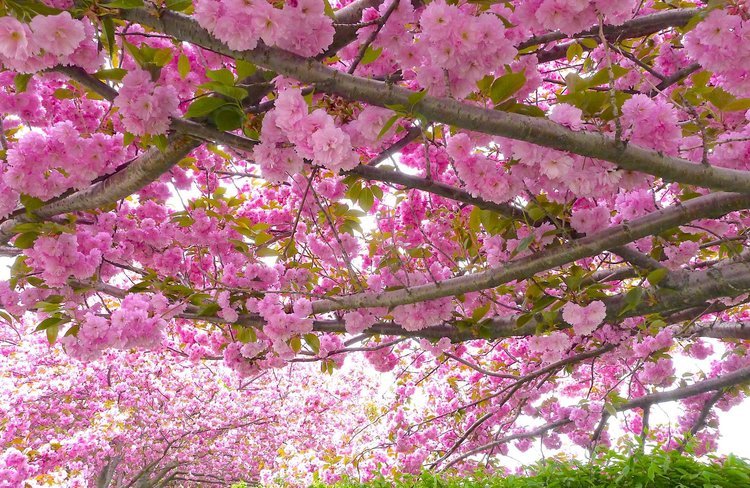Cherry (Prunus serrulata ‘Kwanzan’
Photo By Ilana Sobo taken at Cove Beach Stamford, Connecticut
Cherry (Prunus serrulata ‘Kwanzan’
The Kwanzan cherry tree (Prunus serrulata ‘Kwanzan’), also known as the Japanese flowering cherry, is a breathtaking ornamental tree celebrated for its lavish pink blossoms and graceful form. Native to Japan, Korea, and China, the Kwanzan cherry is renowned for its vibrant double-petaled blooms that burst into a profusion of soft pink in mid to late spring. These blossoms, resembling delicate pom-poms, create a striking visual display, often appearing before the tree fully leafs out. Unlike many other flowering trees, Kwanzan cherries are sterile and do not produce fruit, making them ideal for gardens and landscapes where fruit drop might be a concern.
The tree’s foliage adds another layer of beauty throughout the year, with bronze-colored leaves emerging in spring that mature into a lush green during summer and turn a warm yellow or bronze in autumn. Kwanzan cherry trees grow to a moderate height of 15 to 25 feet, with a symmetrical vase-shaped canopy that makes them an elegant addition to gardens, parks, and streetscapes. They thrive in well-drained soil with full sun and are relatively low-maintenance, requiring only occasional pruning to maintain their shape and remove dead or crossing branches. However, like many cherry trees, they are somewhat susceptible to pests and diseases, such as aphids and fungal infections, so good air circulation and regular monitoring are essential.
Kwanzan cherry trees are deeply symbolic and culturally significant. In Japan, they are an iconic feature of springtime hanami (flower-viewing) celebrations, symbolizing the fleeting beauty of life and the arrival of renewal and hope. These trees were also part of the 1912 gift of cherry trees from Japan to the United States, which were planted in Washington, D.C., to celebrate friendship between the two nations. Their blooms have since become a cherished sight during the National Cherry Blossom Festival.
Whether as a standalone focal point or part of a larger landscape design, the Kwanzan cherry tree brings joy and elegance to any setting. Its exquisite blooms, historical significance, and seasonal beauty make it a favorite among gardeners and admirers of nature alike.
References:
Dirr, M. A. (2009). Manual of Woody Landscape Plants: Their Identification, Ornamental Characteristics, Culture, Propagation, and Uses (6th ed.). Stipes Publishing.

